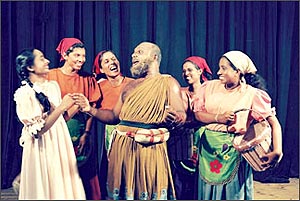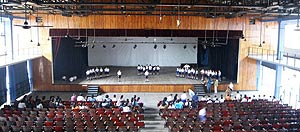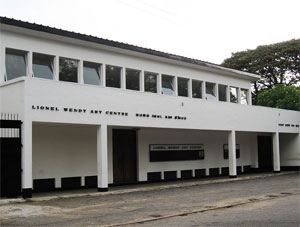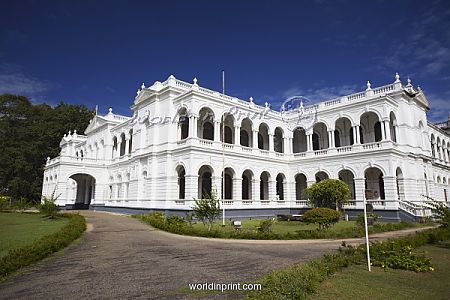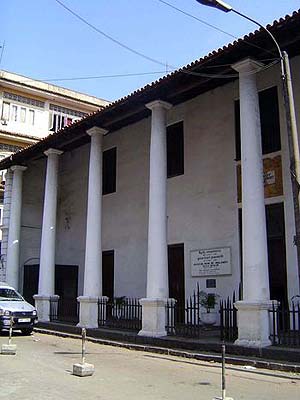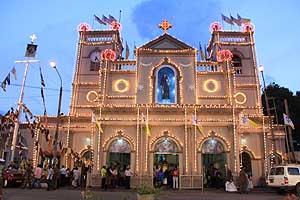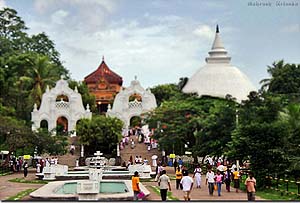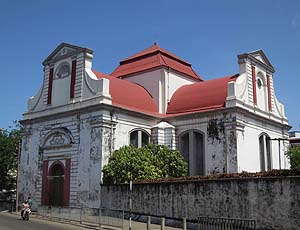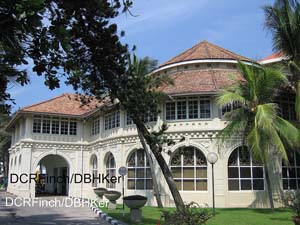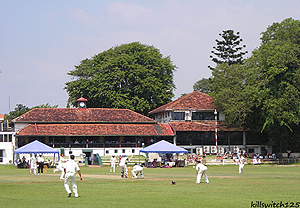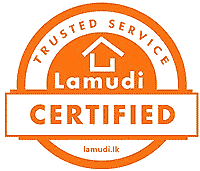
|
|||||||||||||
|
| |||||||||||||
Visiting Cultural Colomboby Susie Cohen
Colombo's rich and varied history is reflected in its vibrant cultural scene, with choices for visitors of all ages to delve a little deeper into the city's fascinating attractions. Here we select a few for the first time visitor looking for a little culture. Theatre and MuseumsThere are options for the theatre, art and museum lover to indulge their interests on a visit to Colombo. The Navarangahala hosts performances, and is a fascinating building in itself. Seating up to 1000 for shows, this was the first indoor purpose built theatre for local arts, and in 1972 was the venue for the signing of the Sri Lankan constitution, which effectively declared the birth of he nation. Additionally, the proprietors of the Lionel Wendt theatre explain that their facility hosts theatre and exhibitions, especially musical theatre and English language productions. Their vibrant programme can be found online when planning for your visit. For museum lovers there is no shortfall in activities. According to the Department for National Museums, the National Museum was founded in 1877 by the British Governor of Sri Lanka. Known originally as the Colombo Museum, it houses carving and statuary alongside artefacts from the colonial era and military memorabilia. It is now the largest museum in the country and a real 'must see' for visitors. As with so many public buildings in Colombo, the building housing the Dutch Museum has a past as full of historical intrigue as many of the artefacts housed within it. Built during the Dutch period, when the governor of Sri Lanka was Thomas Van Rhee, it was originally an official residence before taking on a variety of uses during the British period, including police training centre, post office, telecommunications centre and army hospital. Since 1977 this architectural gem has housed 3,000 objects relating to the Dutch rule of the Sri Lankan coastal regions (1658-1796). Architecture and ReligionThe architecture of Colombo is a fascinating journey through centuries of colonial history, charting different eras through a walk through varied districts and areas. Great examples of religious architecture abound, including St Anthony's Shrine Church, originally built in 1828 and expanded in 1940 to meet the growing demand from the local area. This church and its shrine houses a relic of St Anthony, and the original building was funded by the public faithful to gain intervention on their behalf by the saint. A short ride out of the city takes you to Kelaniya Temple, described as "one of the most revered historic Buddhist temples". Here you will find exquisite examples of sculpture, and it is especially popular for the Duruthu Perahera procession, which takes place in January of every year. This is the climax of a religious festival lasting from the full moon of December to the full moon of January, with the procession itself held at night over the three nights prior to the January full moon. Perhaps the most important Dutch building in Sri Lanka, the Wolvendaal Church was described by Sir William Gregory (the British Governor also responsible for founding the National Museum), as "the Westminster Abbey of Ceylon", and the church remains the final resting place for many of the great and good of the Dutch era. Don't miss the elaborate carving on the tombstones on the floor, and in the wooden pulpit, baptismal font and pews. Living Colonial HistoryMany of the important private institutions of the colonial era are still operating today and provide a glimpse back in time to days gone by. The Colombo Club, according to Arnold Wright quoted in Twentieth Century Impressions of Ceylon, is "a popular public and society rendezvous". Founded in 1871, this is one of the oldest clubs in Asia, now with modern facilities alongside the historical ambiance, offering a bar, restaurant and business centre. Nowhere can British colonial influence be more vividly seen than in the enthusiasm with which cricket is still played at Colombo Cricket Club - a sporting link to a different age. Contemporary culture in Colombo is supported and advanced by a variety of private and public institutions, such as the SAARC Cultural Centre Sri Lanka which works to promote South Asian culture on a global scale. Photographic exhibitions, conferences and competitions to showcase the best contemporary culture are hosted here. Planning a trip?If you are inspired to plan a visit to Colombo to take in the cultural attractions, a little advance planning goes a long way. Take the time to book tickets in advance for popular events; check out the likely weather for your visit to make sure you're properly prepared, check out the exhibitions on offer in the city's galleries. And of course do not forget to arrange adequate travel insurance before your departure. Policies can be tailored to suit individual customers, so that "the things that are important to you are covered." Additionally, if you have any existing medical conditions that require medication, make sure you have an adequate supply for the duration of your trip and speak to your doctor if you have any concerns about managing your health while you're away. A little planning and preparation ahead of time leaves you free to enjoy the sights, sounds and experiences Colombo and Sri Lanka have to offer and helps you make the most of your trip. |
